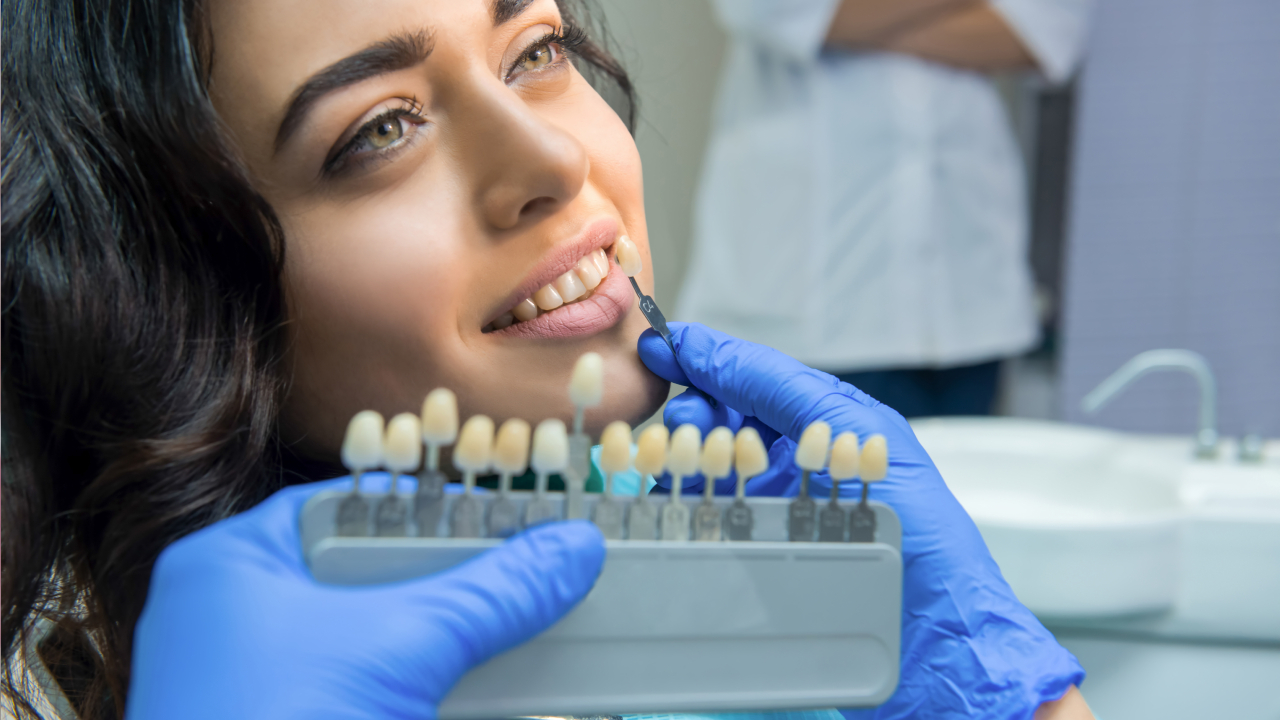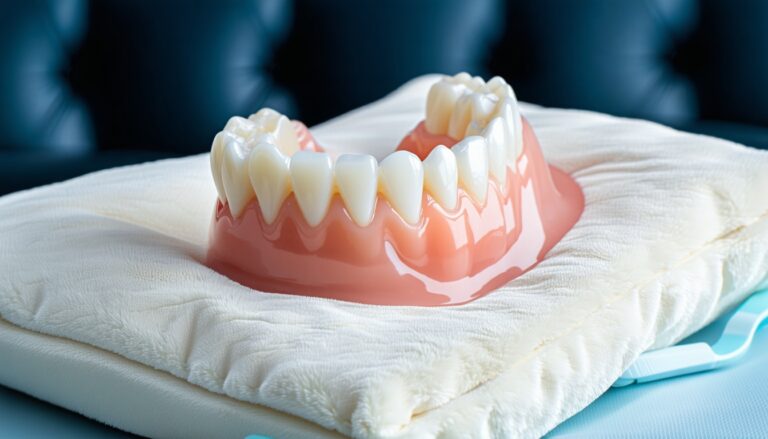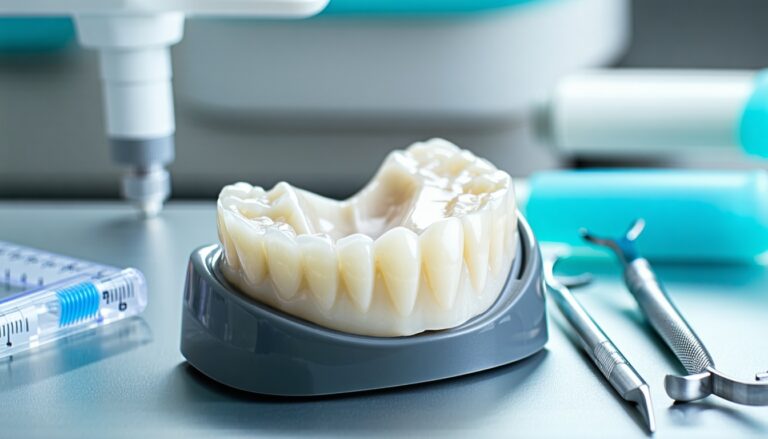Esthetic dental crown placement can boost your confidence and protect your oral health. If you are looking to improve your smile, alleviate dental discomfort, or keep your teeth functional for years to come, crowns can be an excellent option. By providing a natural-looking, tooth-shaped cap to cover a weakened or damaged tooth, esthetic dental crowns help you preserve your oral health while enhancing your overall appearance. At Reimels Dentistry, we focus on offering industry-leading cosmetic and restorative care to ensure you enjoy the long-term benefits of a beautiful, healthy smile.
Below, you will discover how esthetic dental crown placement works, why it is worth the investment, how to minimize risks, and what kind of material options are available. You will also learn how Reimels Dentistry can help you prevent future oral health issues and maintain your smile for years to come.
Discover esthetic dental crown placement
Esthetic dental crown placement involves securing a tooth-shaped “cap” over a damaged tooth to restore shape, size, strength, and overall appearance. Crowns can also cover dental implants or root canal-treated teeth. Since crowns act as a protective shell around weakened enamel, they help to prevent further damage, infection, or decay.
Choosing the right dental team is essential when pursuing any cosmetic or restorative procedure. At Reimels Dentistry, we are dedicated to advanced techniques and a supportive environment, ensuring you feel informed and comfortable at every step.
Key advantages of crowns
- Reinforce weakened or damaged teeth, helping you avoid extractions
- Cover discoloration or irregularly shaped teeth for a uniform appearance
- Protect teeth after root canal therapy
- Safeguard dental implants
- Provide long-lasting results, often for more than a decade with proper care
The concept of “esthetics”
Your smile creates a lasting impression. Since crowns usually replace or reinforce the visible parts of your teeth, it is crucial for them to blend with your natural smile. Esthetic dental crown placement, therefore, goes beyond mere function. It emphasizes color matching, shape, and translucency so that your restoration is practically indistinguishable from adjacent teeth.
Understand the treatment process
If you have chipped, cracked, or decayed teeth, Reimels Dentistry can guide you through a straightforward treatment plan. While individual experiences vary, this general overview helps clarify what you can expect.
Initial preparation
- Examination and consultation
You begin with an in-depth evaluation of your tooth’s condition during a treatment planning consultation. In this phase, we determine whether a crown is indeed the most appropriate solution. According to Dr. Gregory Hillyard, the dentist looks for structural damage, decay, or large fillings that compromise the tooth. - Enamel reshaping
Once you decide to move forward, your dentist will remove a thin layer of enamel to create space for the new crown. During this step, you usually receive local anesthetic to ensure comfort. As Dr. Gregory Hillyard notes, removing just enough enamel ensures a secure fit so the crown feels natural. - Impression or scan
The next phase is to take impressions or digital scans of your tooth. These records capture tooth size and shape. Whether using traditional molds or computer-aided technology, the aim is to achieve close precision. These measurements then go to a dental lab to create the crown or feed into an in-house milling machine if same-day technology is available.
Temporary crown
If your dentist uses traditional methods, you may wear a temporary crown for a couple of weeks. This short-term crown shields the prepared tooth from damage or sensitivity. According to Bay Colony Dental, conventional crowns typically require two separate visits. In some modern clinics, same-day crowns might be offered, letting you complete both preparation and final placement in one appointment.
Final crown placement
When the custom-designed crown is ready, your dentist will remove the temporary crown, clean the area, and then test the fit of the new restoration. Fine adjustments enhance your bite comfort, and the crown is ultimately cemented into place with a bonding agent. After a quick polish, the new restoration should feel comfortable from day one.
Prevent complications and risks
Though esthetic dental crown placement is a routine procedure, understanding potential risks helps you make an informed choice. Most complications are rare and can be prevented through proper care.
Possible issues
- Allergic reaction: If you are allergic to specific metals or ceramics, it is critical to share that information with your provider. According to Dental Kay, some patients experience rashes or inflammation if the crown material triggers an immune response.
- Sensitivity: Slight sensitivity to hot, cold, or sweet foods after crowning is normal. This typically fades within days or weeks.
- Nerve damage: Although rare, nerve damage can occur if a tooth is profoundly decayed or cracks extend too deep.
- Crown fracture: Excessive pressure or trauma can lead to fractures. Materials like porcelain or ceramic are tough but can chip if subjected to strong forces.
Preventing problems
- Accurate fit: Ill-fitting crowns can harbor bacteria that lead to decay, discomfort, and gum inflammation. Meticulous preparation and accurate impressions minimize these risks.
- Behavior changes: If you clench or grind your teeth, consider a custom mouth guard. At Reimels Dentistry, we provide options like night guard fabrication to ensure your restoration remains intact.
- Oral hygiene: Daily brushing, flossing, and regular dental checkups are indispensable for keeping your crown and surrounding gums healthy.
- Comprehensive treatment planning: If you require additional procedures, such as laser gum contouring or cosmetic bonding service, ask your dentist to examine how each treatment fits together. During a cosmetic dental consultation, we can discuss how different services complement your crown placement.
Compare crown material options
Your crown’s durability, cost, and appearance largely depend on the material. Selecting the right type ensures optimum functionality and aesthetic appeal. According to the Cleveland Clinic, common materials include:
| Crown Type | Key Advantages | Potential Drawbacks |
|---|---|---|
| Metal (Gold, alloys) | Extremely durable, resistant to breakage, minimal tooth removal | Not the most esthetic |
| Porcelain-fused-to-metal | Strong metal base with more natural look | Over time, metal edge may become visible, can chip |
| All-ceramic (porcelain) | Superior esthetics, great for front teeth | Slightly less fracture-resistant than metals |
| Zirconia | Excellent strength, decent esthetics, can be milled same-day | Can be more opaque than porcelain |
| Resin | Low-cost, easy to repair | Less durable, prone to wear and breakage |
Choosing the right option for you
- Front teeth
For front teeth, appearance is usually the top priority. All-ceramic or porcelain-fused-to-zirconia crowns tend to excel in translucency and color matching. Guard Your Smile notes that zirconia and lithium disilicate top the list for aesthetics due to their ability to mimic natural enamel. - Molars
When durability trumps aesthetics, gold or zirconia is often recommended. Back teeth endure a lot of bite force, so having a robust crown can significantly reduce fracture risks over the long term. - Same-day solutions
Certain all-ceramic zirconia crowns can be milled chairside using digital dentistry. If you are looking for quick restoration, this technology can shorten the timeline from weeks to hours. However, your dentist will need to assess if your tooth’s condition suits same-day crowns.
Maintain and protect your investment
Esthetic dental crown placement yields a restoration that can last 10-15 years or more, although some have reached 30 years of function with excellent care. Maintaining your new crown means incorporating proactive habits and scheduling regular appointments with your dentist.
Daily habits
- Brush your teeth at least twice a day with soft bristles and fluoride toothpaste
- Floss around the crown carefully to prevent plaque buildup
- Avoid chewing on ice, pens, or other hard objects
- Reduce intake of sugary snacks, which raise the risk of tooth decay in uncovered tooth areas
Regular checkups
See your dentist for professional cleanings and examinations at least twice a year. During these visits, we evaluate the condition of your crown, assess your gums, and detect early signs of wear or decay. If you suspect you might be grinding your teeth, address it with your dentist promptly. A night guard fabrication may help prevent cracks or chipping.
Additional cosmetic enhancements
Esthetic dental crown placement is often part of a broader smile rejuvenation plan. At Reimels Dentistry, we work with you to craft a personalized roadmap during a cosmetic dental consultation. You might combine crowns with:
- Teeth whitening treatment for a brighter smile
- Facial aesthetics consultation if you want to explore non-surgical options for smoother, younger-looking skin
- Digital smile imaging to visualize potential outcomes
- Implant consultation for replacing missing teeth that cannot be salvaged
Through thorough planning, we can make sure all treatments align to give you optimal results that last.
Why choosing Reimels Dentistry matters
You deserve the highest caliber of preventive, restorative, and cosmetic dental care. At Reimels Dentistry, we aim to meet your unique needs through:
- Advanced technology
We utilize modern dental devices for quick imaging, precise measurements, and more efficient crown fabrication. Digital workflows, like chairside milling, reduce treatment times without compromising results. - Holistic approach
By looking at your oral health and aesthetic goals together, we design a comprehensive treatment plan. Whether you need family dental care service to make sure everyone’s oral health is on track or want a laser gum contouring procedure to fine-tune your gum line, we take every aspect into account. - Expert guidance
Our team’s experience ensures you receive quality care from start to finish. From selecting the right crown material to planning multi-faceted cosmetic enhancements, we guide you meticulously so you remain informed every step of the way. - Supportive environment
We understand that dental procedures can be stressful. Our goal is to foster an empathetic atmosphere where your questions are welcomed, your concerns are addressed, and your comfort is prioritized.
By opting for esthetic dental crown placement with Reimels Dentistry, you not only safeguard your tooth structure but also invest in the confidence that a healthy, natural-looking smile can bring.
Frequently asked questions
- How long does esthetic dental crown placement usually take?
The duration varies based on your chosen procedure. Traditional crowns typically require two visits spanning a couple of weeks, mainly to allow lab fabrication time. With modern computer-aided systems, you could receive your permanent crown in a single appointment. According to Center for Dentofacial Aesthetics, the entire process, from tooth preparation to final placement, might take less than two hours when same-day technology is used. - Are esthetic dental crowns strong enough for daily wear?
Yes. Today’s all-ceramic zirconia or porcelain crowns are incredibly durable. Many on the market offer the strength to handle daily chewing and biting forces. However, you should still avoid chewing hard objects such as ice or pens. If you experience any issues with grinding or clenching, consider a protective guard, like a sports mouth guard or a night guard, to maintain the longevity of your restoration. - How do I know if I am a good candidate for a crown?
You are likely a good candidate if you have a cracked, chipped, or significantly decayed tooth. Overall, your tooth’s underlying structure must be healthy enough to support the crown. A new patient dental exam can help us determine whether esthetic dental crown placement is right for you. If more advanced procedures are needed, such as an oral surgery consultation, we will guide you through every step. - Will my crowned tooth look different from my natural teeth?
Modern materials closely replicate the color and translucence of natural enamel, so your crowned tooth should look nearly identical to surrounding teeth. By taking highly accurate measurements and customizing color shades, we aim for a seamless smile. For extra precision, we may use digital smile imaging to simulate potential outcomes and verify esthetics. - Is esthetic dental crown placement a permanent solution?
Although crowns can last for several decades, they are not immune to wear and tear. The average lifespan is roughly 10-15 years, or even longer with exceptional care. Keep up with regular dental visits, daily brushing, flossing, and consider wearing a mouth guard if you tend to grind your teeth. If your crown sustains damage or becomes loose, do not delay making an appointment to address the problem.
Esthetic dental crown placement can be one of the most impactful ways to upgrade your smile while safeguarding your teeth. With the guidance of Reimels Dentistry, you can benefit from advanced restorative and cosmetic procedures designed for longevity and natural beauty. From the initial consultation to your final follow-up, our priority is to ensure your experience is supportive, informed, and comfortable. When you invest in esthetic crowns, you invest in a future of confidence and a smile that lights up every room you enter.








